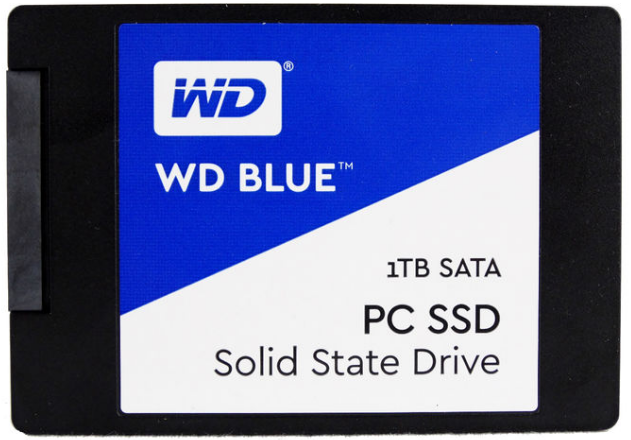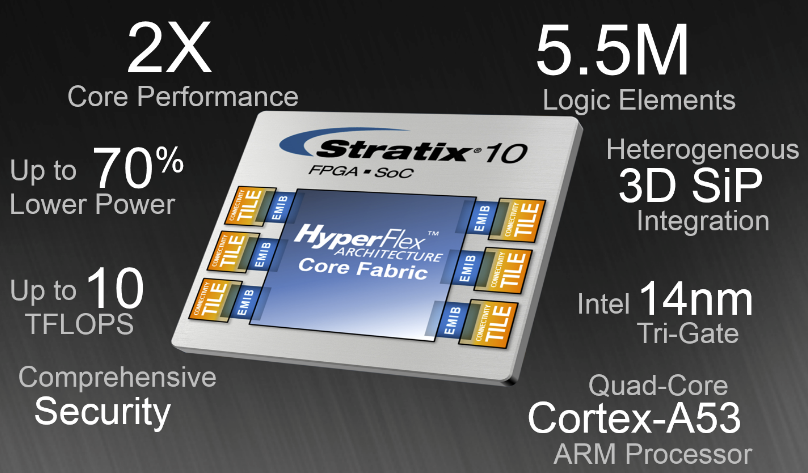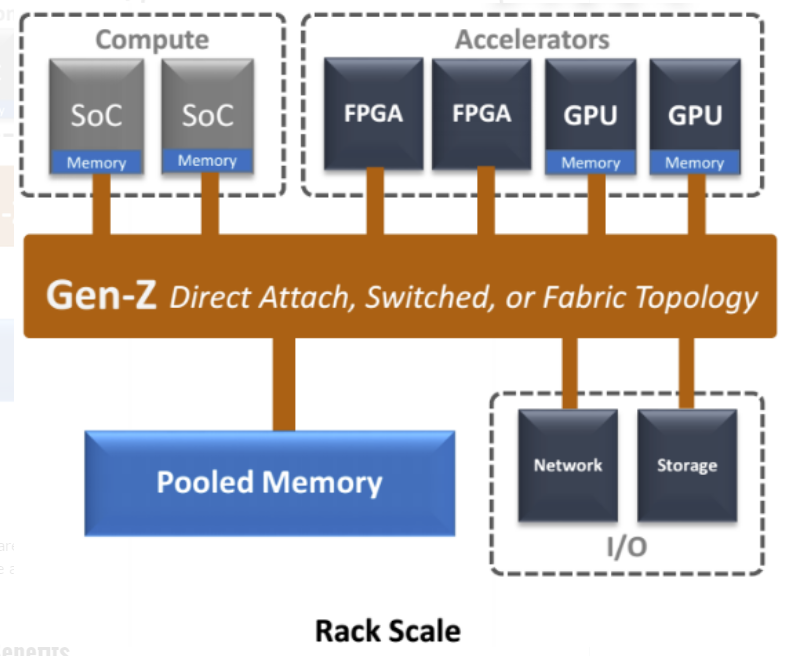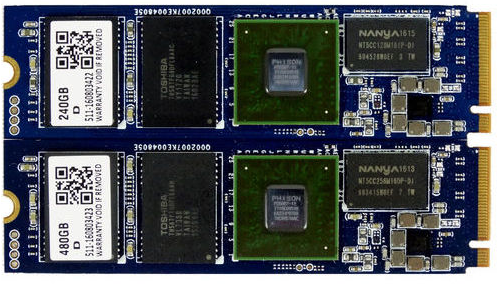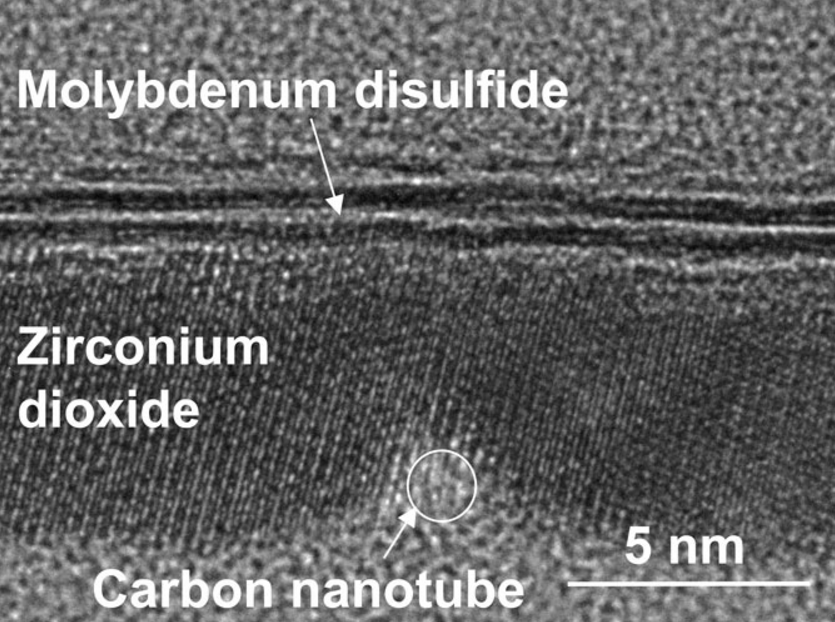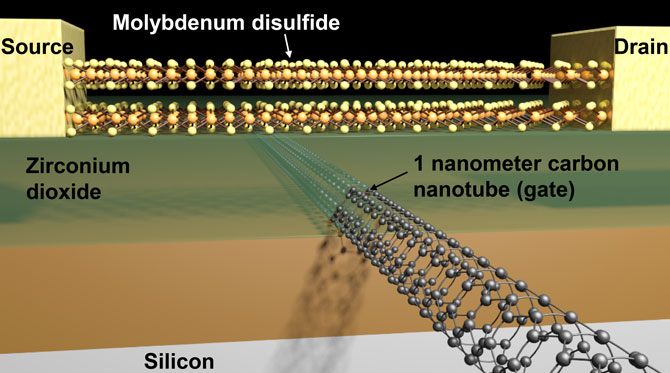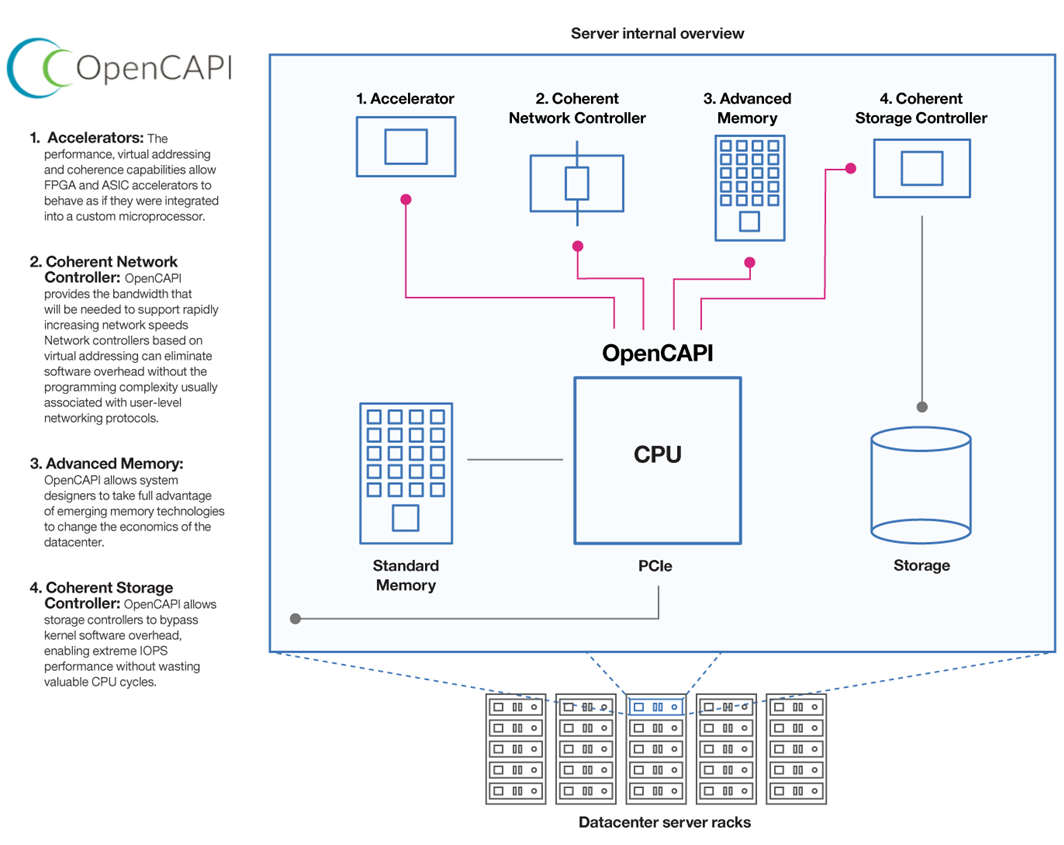The Week In Storage And CPUs: Transistors Hit 1nm, PCs Continue To Plummet, IBM Takes Cap Off CAPI
This week in storage and CPUs found news that researchers are developing the first 1nm transistors, which is a promising development as Moore's law grinds to a halt. Speaking of grinding to a halt, the PC market continued its frightening fall. The industry is pounding the war drums of open interfaces, and IBM and all its friends joined forces to combat Intel's aspirations of an Intel-branded datacenter. We'll cover those after the recap. There's a lot of cud this week, so let's get right to chewing.
The goodness of Kaby Lake is almost upon us, so it's no surprise to see the motherboard vendors lining up to support Intel's latest. Asus started by slapping the "Kaby" tag on 87 of its 100-series motherboards last week, and ASRock weighed in with its own salvo of upgrades this week. Not to be forgotten, Apollo Lake SoCs are also about to wade into the marketplace, so Asus released its J3455M-E motherboard, but in a case of oneupmanship, ASRock announced five new Apollo Lake motherboards with passive cooling.
WD armed itself with SanDisk for a mere $16 billion when it gobbled it up during a fire sale. Now WD has NAND fabs and a war chest bristling with flash patents (5,000+), so it is free to assault the SSD market. WD made its somewhat triumphant return to SSD with its new Blue series, but it falls below our pricing expectations. NAND is non-volatile, but the SSD market surely is; prices fluctuate rapidly, so we expect WD to adjust its pricing soon. Of course, the high price may just be WD dipping its toes into the SSD waters to see what the market will stomach, or perhaps the NAND shortage is already rearing its ugly head. We'll know in a few weeks.
Intel famously acquired Altera for the tidy sum of $16.5 billion (which seems to be the going price for everything these days), and the first fruits of its acquisition come to market in the form of the Stratix 10 FPGA. The new chip barrels in with the 14nm+ tri-gate process and up to 1TB/s of memory bandwidth from on-package HBM2 in tow. If that doesn't tickle your fancy, perhaps the 5.5 million logic elements or the impressive 80 GFlops-per-watt will (good eye, bit_user). Intel also threw in a 64-bit quad-core ARM Cortex-A53 processor just to get us talking, but I wouldn't be surprised to see that change to an Atom in the future.
A new day dawns, and with it, a new interconnect. The Gen-Z consortium consists of industry heavyweights such as AMD, ARM, Dell EMC, IBM, HPE, Micron, Samsung, Seagate, SK hynix, Western Digital, and others, and it is promoting a new bus interconnect for next-generation storage class memory. Unlike other interconnects, the Gen-Z spec uses memory semantics (load/stores - put/gets) to speed up the fabric. Gen-Z is perhaps most notable for its lack of Intel. The industry is fearful that Intel will utilize a proprietary interface for 3D XPoint and other emerging memories, so the broad consortium aims to strike back at the Intel empire with a free interconnect to keep prices in check.
Patriot's Hellfire M.2 NVMe SSDs have a great name that evokes images of missiles, bombs, and fire. These are always the first things on my mind when I'm looking to upgrade my computing experience, so I'm all ears. Chris Ramseyer shot the Hellfire at our test regimen and found it to offer much better performance with the new Phison E7 firmware. It also has an attractive price point. The SSD market is in a state of flux as a new truckload of products come to market, so it might be wise to wait for more products in the next month before making your next purchase.
Researchers Bust Out Lube And Carbon Nanotubes To Design 1nm Transistors (A Little Lube Fixes Everything)
Carbon nanotubes are the cure for all that ails you; at least, that's what researchers think. We've been awash in carbon nanotube news as of late, as researchers recently created nanotube-based transistors that outperform silicon, and Fujitsu weighed in with an announcement that it is bringing carbon nanotube-powered NRAM memory to market next year. Of course, all of this nanotube-iness began back in 1952, and we have yet to experience the revolution, so take the news with a grain of salt (nanotubes?).
Get Tom's Hardware's best news and in-depth reviews, straight to your inbox.
Researchers at the University of California, Berkeley, added to the recent news with the announcement that they have created a 1nm transistor using carbon nanotubes and molybdenum disulfide (MoS2--a common engine lubricant) in lieu of silicon. The development of a 1nm transistor is important because most industry leaders predict that transistors, and thus the seemingly-immortal Moore's Law, will hit a brick wall at 5nm. Semiconductor fabs have already encountered significant quantum tunneling challenges as they reduce the size of the silicon transistors below 14nm, which is one of the key contributors to the recent slowdown in the chip-shrinking cadence.
Transistors have a source, drain, and gate. In the image above, the current passes from the source to the drain, which the gate controls. The gate switches when voltage is applied. The electrons that flow through the MoS2 channel are heavier because it has more resistance than silicon, thus allowing their flow to be controlled with shorter gate lengths. Researchers can roll MoS2 into 0.65nm-thick sheets while retaining the ability to store energy in an electric field, but there is no suitable way to forge a 1nm gate using standard lithography techniques. The researchers pulled out the trusty hollow carbon nanotubes for the proof of concept. However, we should keep in mind that this is merely a proof of concept, and the new technology has no plans, at least as of yet, for mass production.
The researchers published a paper in Science that one can access with a subscription. The abstract notes:
As an alternative to Si, certain layered semiconductors are attractive for their atomically uniform thickness down to a monolayer, lower dielectric constants, larger band gaps, and heavier carrier effective mass. Here, we demonstrate molybdenum disulfide (MoS2) transistors with a 1-nm physical gate length using a single-walled carbon nanotube as the gate electrode. These ultrashort devices exhibit excellent switching characteristics with near ideal subthreshold swing of ~65 millivolts per decade and an On/Off current ratio of ~106. Simulations show an effective channel length of ~3.9 nm in the Off state and ~1 nm in the On state.
Demonstrating a new technology and actually overcoming the economic barriers that stand between all promising technologies and mass production are always two vastly different things. The new development does show the ability to overcome the limitations of Moore's Law with new materials and techniques, but it will be some time before we see a true production-worthy silicon alternative emerge.
IBM Takes The Cap Off CAPI
CAPI (Coherent Accelerator Processor Interface) is perhaps the most exciting accelerator interface that you've never heard of, largely because the promising interface is relegated to the high end of the server market. Accelerators are becoming more popular as the rapid generational increases in computing power are waning. These slip-in computational power boosters attack a range of workloads such as compression, encryption, networking, and storage applications. Accelerators wield FPGAs and ASICs, and even flash storage, to great effect; but the nefarious PCIe bus stands in the way of unlocking the true potential of the speedy add-ons.
IBM developed the CAPI interface to tackle the bandwidth problem. CAPI utilizes standard PCIe connections but leverages a custom protocol that provides up to 50% more performance (25Gbits per second) than a typical PCIe 4.0 slot (16Gbits per second). IBM claims the combination of accelerators and CAPI offers up to 10X the workload performance in big data applications, largely due to increased bandwidth and reduced data movement (it's coherent). Using the existing PCIe infrastructure with an optimized interface, much like Nvidia does with its proprietary NVLINK (which IBM is also a vocal proponent of), affords a faster pathway with lower latency that can help to address the most challenging of workloads, such as machine learning, with customized high-performance accelerators.
IBM started down the path of open source-ry through its OpenPOWER Foundation, which began with a mere five members but has ballooned to 260. The initial effort involved opening up the "target" side of the interface, which was necessary to spur development of third-party accelerators. Now that a robust ecosystem of cards has appeared, the company has decided to open up the other end (host) of the CAPI interface.
IBM still stands behind PCIe and NVLINK, but it has brought together a broad industry conflagration, which includes AMD, Dell, EMC, Google, Mellanox, Micron, and Xilinx, to support the new OpenCAPI Consortium. The purpose of opening up the spec is to allow other vendors, and processor architectures beyond IBM's own Power products, to leverage the speedy interface. Xilinx announced that it is whipping up FPGAs to support the new interface, and Mellanox has plans to infuse its networking gear with the new interface, as well.
Google and Rackspace have a new server codenamed Zaius that will leverage POWER9 processors and the OpenCAPI interface. IBM also plans to introduce its OpenCAPI-powered servers in the second half of 2017.
The formation of OpenCAPI, and the heavyweights behind the initiative, signals yet another broad consortium of industry players that are lining up behind open interfaces, as opposed to the proprietary interfaces that hamstring development and promote stratospheric pricing models (Intel, they are eyeballing you).
Most notably, ARM and AMD are in the OpenCAPI consortium, so look for the interface to spread quickly amongst the Intel competition. We asked, and yes, Intel is free to join the consortium. If enough of the industry adopts the interface and moves forward while leaving Intel behind, Intel might not have a choice.
PC Market Continues To Slump--Just Not Quite As Slumpy
The poor PC market has been under duress for an extended period of time, so it really is no surprise that the decline continues. Gartner released its preliminary quarterly PC Tale of Doom, otherwise known as the PC Quarterly Statistics Worldwide By Region report, which indicates that PC shipments have experienced a record-setting second year of declines.
Worldwide PC shipments weighed in at 68.9 million units in 3Q16, which represents a 5.7% decline over the previous quarter. Gartner attributes much of the loss to the proliferation of computing devices, which includes phones and tablets. The company predicts that the average consumer wields at least three computing devices, which may help to reduce the need to upgrade their notebook and desktop PCs. It's notable that both the smartphone and tablet markets are also in decline, so the proliferation of devices may have a knock-on effect across the board.
The U.S. market has improved to the tune of 15.3%, but the global picture helped to drag down overall PC shipments. The report also noted that the top six vendors claimed a record-setting 78% of the market share, which might indicate that smaller vendors are suffering as the industry continues to consolidate. Surprisingly, Intel recently increased its 3Q16 revenue projections due to increased chip sales, so perhaps there is a glimmer of hope on the horizon.
The current malaise in the computing industry likely bears some of the blame, as well. We’re stuck in a never-ending cycle of incremental upgrades that don't really bring any new exciting technologies to bear, so there is nothing to spur a heavy refresh cycle. The industry envisioned a sharp increase due to the Windows 10 upgrade, but it appears that never materialized, likely because consumers could simply upgrade their existing operating system for free.
In either case, the industry needs a big jump forward to spur more excitement, and because the operating system and software segments aren't going to provide the stimulus, perhaps new hardware will. Intel has its Kaby Lake processors in the hopper, but the CPUs look to be yet another iteration of the same incremental upgrade cycle. AMD has, arguably, the most exciting new release in its forthcoming Zen processors, but only time will tell if that can help jump start the PC economy.

Paul Alcorn is the Editor-in-Chief for Tom's Hardware US. He also writes news and reviews on CPUs, storage, and enterprise hardware.
-
Scrotus I'd be more than happy to help the slumping PC market if only Intel would hurry up and ship some Kaby Lake desktop CPU's. I've got all the new parts except for a motherboard, CPU and memory and I don't want to forge ahead with a skylark setup with the new Kaby Lake and series 200 chipsets coming. Why is Intel dragging its feet and keeping the ship date a secret? I may consider jumping ship to AMD.Reply -
CRamseyer It is because AMD hasn't shipped an enthusiast product Intel is not shipping Kaby Lake. Just my .02.Reply -
wifiburger i think the pc market will continue it's downfall and I think it's thanks to Microsoft monopoly hold on the OS,Reply
once Microsoft garbage software die the market will recover,
apple, google is doing fine and those don't care about Microsoft garbage software -
Larry Litmanen The smaller the PC market gets they less investment goes into it.Reply
Here's the problem, PC experience is amazing on the high end, with SSD PC boots in seconds and on a 34 inch 1440P monitor everything is amazing. But MOST people are not in that area, most people buy PCs for $300-$400 and suffer with them and abandon the market.
Here's how i would resuscitate the PC market, if i am Intel i would have every new chip on the market support nothing but 1080P displays at a minimum as to get rid of everything below it. I would only support storage that boots in under 15 seconds. I would discontinue all support for any output that is older than HDMI. I would discontinue support for monitors that are smaller than 20 inches.
People would upgrade if they had issues accessing Facebook or Internet browser, maybe these tech companies can work with those to make browsers more feature rich to encourage people to buy more powerful hardware. -
sykozis Reply18730646 said:The smaller the PC market gets they less investment goes into it.
Here's the problem, PC experience is amazing on the high end, with SSD PC boots in seconds and on a 34 inch 1440P monitor everything is amazing. But MOST people are not in that area, most people buy PCs for $300-$400 and suffer with them and abandon the market.
Here's how i would resuscitate the PC market, if i am Intel i would have every new chip on the market support nothing but 1080P displays at a minimum as to get rid of everything below it. I would only support storage that boots in under 15 seconds. I would discontinue all support for any output that is older than HDMI. I would discontinue support for monitors that are smaller than 20 inches.
People would upgrade if they had issues accessing Facebook or Internet browser, maybe these tech companies can work with those to make browsers more feature rich to encourage people to buy more powerful hardware.
Doing something so utterly stupid would almost completely kill the PC market.
If you drop support for monitors smaller than 20 inches, the laptop market dies.
People can access Facebook, Instagram, Twitter, etc from their smartphone. This is why the PC market has been in a decline.
Your plan would do considerably more harm to the industry than good. -
Martell1977 The PC market is slumping, in my opinion, because of both hardware ad software, but not so much the OS. We all know that Intel has either gotten complacent or they are having a lot of trouble tweaking their architecture for substantial performance gains. My primary machine still rocks a i7-950, yet there is no good reason for me to upgrade it. My secondary PC runs C2Q Q9550 OC'd to 3.6ghz and can run many of my programs rather well, though at some reduced settings.Reply
On the software side, there is really a slump in new IP. All the FPS games are pretty much the same but with different skins and slightly different graphics quality. The RTS market is basically Blizzard and a few small companies. But then there are a multitude of games for smartphones and tablets. I think at this point there is much more variety outside the PC market. Back in the '90s there was a wide variety of games and they were a blast to play, my personal favorite was "The 7th Guest", but there is nothing on the market even close to it today.
New graphics upgrades are great, but there needs to be some variety, rehashing the same thing over and over gets old. AMD is probably banking on VR to revitalize the market. -
mrmez Reply18730646 said:The smaller the PC market gets they less investment goes into it.
Here's the problem, PC experience is amazing on the high end, with SSD PC boots in seconds and on a 34 inch 1440P monitor everything is amazing. But MOST people are not in that area, most people buy PCs for $300-$400 and suffer with them and abandon the market.
Here's how i would resuscitate the PC market, if i am Intel i would have every new chip on the market support nothing but 1080P displays at a minimum as to get rid of everything below it. I would only support storage that boots in under 15 seconds. I would discontinue all support for any output that is older than HDMI. I would discontinue support for monitors that are smaller than 20 inches.
People would upgrade if they had issues accessing Facebook or Internet browser, maybe these tech companies can work with those to make browsers more feature rich to encourage people to buy more powerful hardware.
That's a great idea, and companies like Apple have gone that route and become highly profitable.
Unfortunately the PC market is driven firstly (ND Maybe solely) by price, and lastly by consumer experience. Suggest buying a Mac, and the first 10,000 comments will be "get a pc with 10x the spec for 1/10th the price".
How can I explain the user experience of a 5K imac to a user who's still debating the cost of 1440. Harder still when I've been using 5K for 2 years now, and 1440... well that's 2009 for me.
Now this is a gaming centric ENTHUSIAST forum, and not representative of the pc market. Don't forget that. We OC and water cool while the 95% of the market think a bus is how some people get to work.
Enthusiast motorists want to do engine and drivetrain swaps in their garages, but look out your window and 99.9% of cars are pre-built. There will always be enthusiasts in every area (thankfully), but computers today are almost utilities, standardised tools. I don't want to buy a drill in bits and assemble it, I just want to choose my model and start using it. -
Tom Griffin If and when virtual reality really comes to mainstream instead of a bunch of demos I can see a small increase in actual PC sales.Reply -
memadmax The Gen-Z consortium and the interface will probably be the most important conglomerate that we see in our lifetimes.Reply
Not only does it defeat intel, but also microsoft, as both have teamed up to corral us into a closed system... -
wifiburger I think the harsh reality of PC market decline is tied to the vast unpopularity of Microsoft OS,Reply
nobody wants to invest in a PC and get stuck with Windows, prob Apple, Google Chromebook will steal another chuck soon enough

